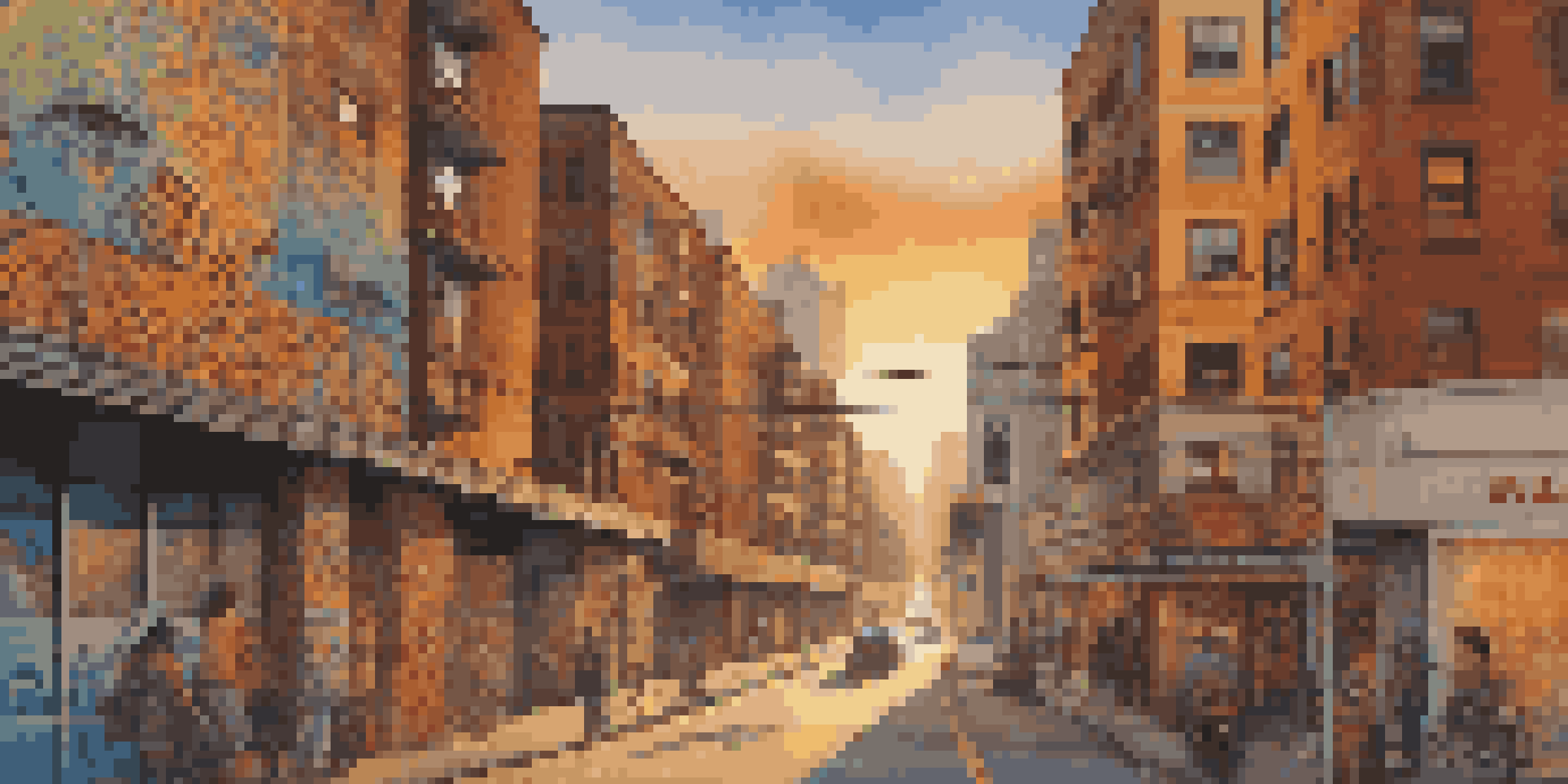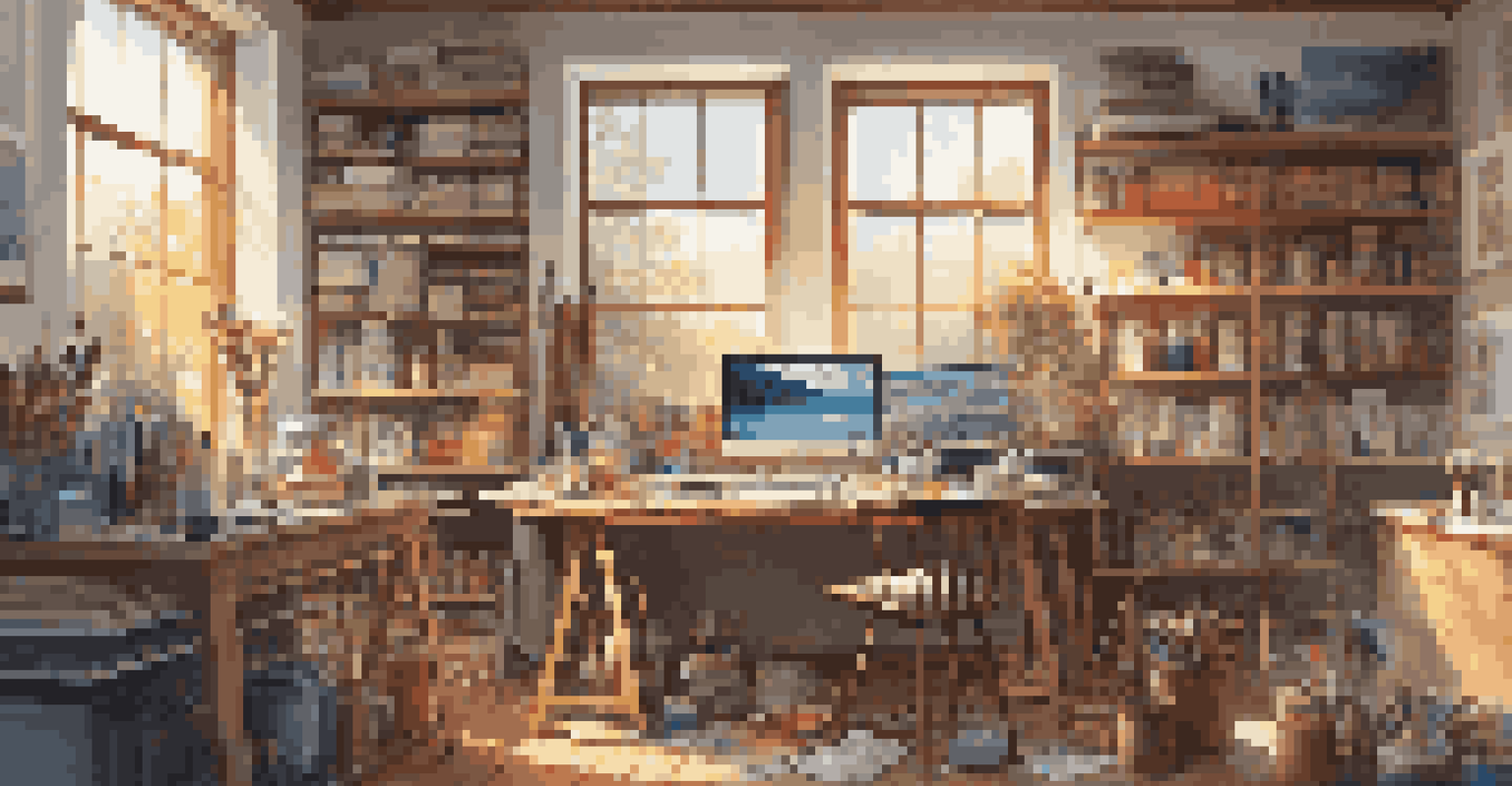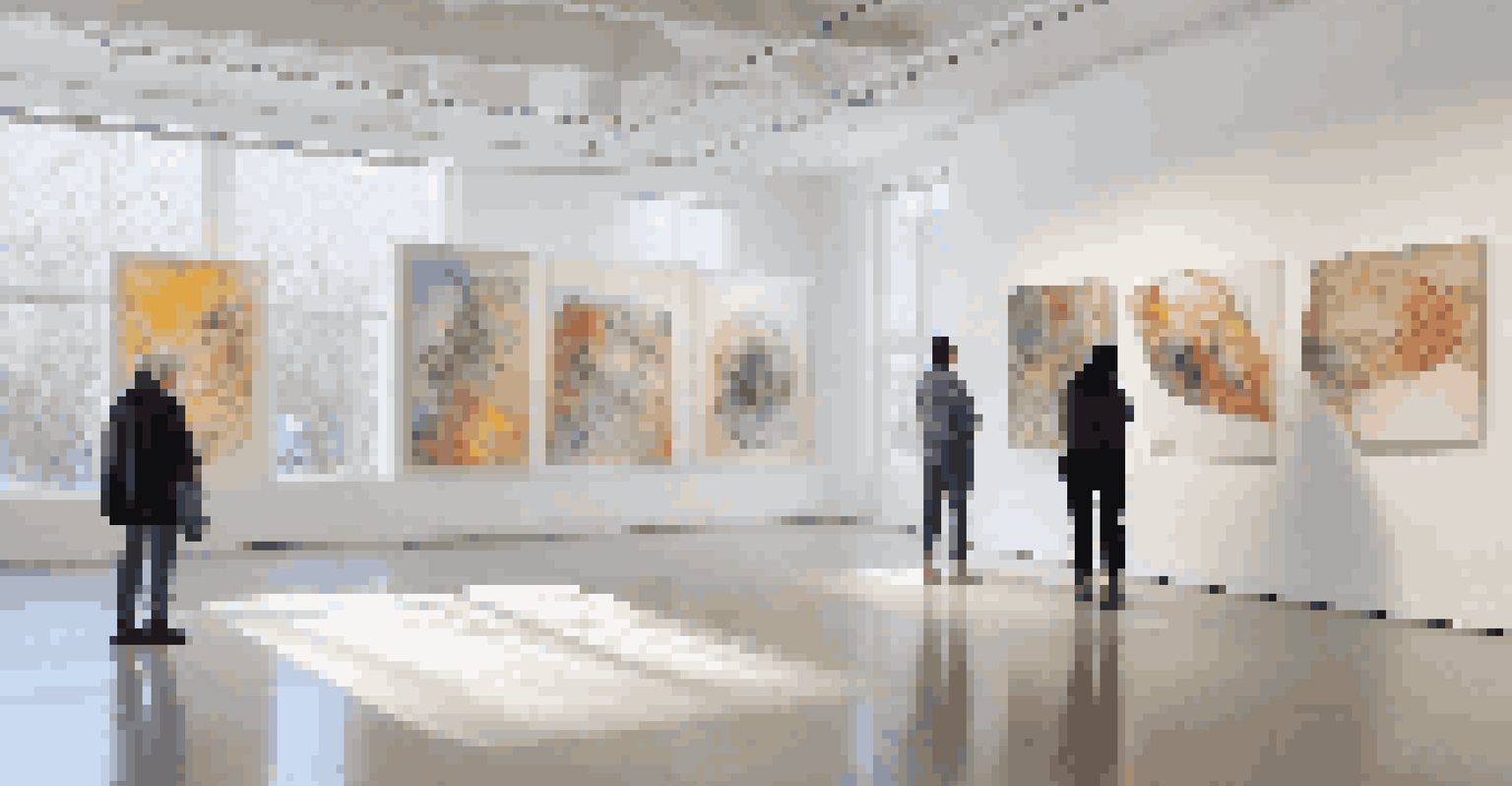The Impact of Globalization on Artistic Expression Today

Understanding Globalization in the Art World
Globalization refers to the interconnectedness of cultures, economies, and ideas across the globe. In the art world, this phenomenon allows artists to share their work and influence with a wider audience than ever before. As cultures blend, artists draw inspiration from diverse sources, leading to innovative forms of expression that reflect a global perspective.
Art is the most beautiful of all lies; it is the most honest of all truths.
For example, a mural in a bustling urban center might incorporate traditional patterns from Indigenous cultures, combined with modern graffiti styles. This fusion not only celebrates cultural heritage but also speaks to contemporary issues, making art relevant to a global audience. As such, globalization has become a powerful catalyst for artistic experimentation and collaboration.
Moreover, artists now have access to digital platforms that amplify their reach. Social media and online galleries enable them to exhibit their work internationally, breaking down geographical barriers that previously limited visibility. This accessibility fosters a vibrant exchange of ideas, pushing artists to explore new themes and techniques.
Cultural Exchange: A Double-Edged Sword
While globalization facilitates cultural exchange, it also raises questions about cultural appropriation. Artists may borrow elements from other cultures, leading to debates about authenticity and respect. For instance, a Western designer using traditional textiles from an Indigenous culture without proper acknowledgment can spark outrage and discussions around ownership of cultural symbols.

This dynamic illustrates the fine line between appreciation and exploitation. Artists must navigate these complexities by engaging with cultures authentically and respectfully. Building relationships with communities and understanding their histories can enrich artistic practice, ensuring that borrowed elements honor their origins.
Globalization Enhances Artistic Reach
Artists can now share their work globally, blending cultural influences and fostering innovation.
Consequently, the conversation around cultural appropriation encourages artists to think critically about their influences. It challenges them to create work that not only resonates with a global audience but also respects and elevates the cultures they draw from. This mindful approach can lead to more meaningful and impactful art.
Technology's Role in Artistic Globalization
Technology has revolutionized how art is created, shared, and consumed. With tools like digital painting software, artists can experiment with styles and techniques without the limitations of traditional media. This democratization of art-making empowers individuals from diverse backgrounds to express themselves creatively, regardless of their resources.
We are all artists, and we all possess the ability to create. It's about how we use that power to reflect the world around us.
Additionally, the internet serves as a vast gallery where artists can showcase their work to a global audience. Platforms like Instagram and TikTok allow for immediate feedback and engagement, fostering a sense of community among creators and viewers. This instant interaction can inspire artists to innovate and evolve their styles in response to audience reactions.
Moreover, virtual reality (VR) and augmented reality (AR) are pushing the boundaries of artistic expression. These technologies enable immersive experiences that invite audiences to engage with art in unprecedented ways. As a result, contemporary art continues to evolve, reflecting the rapid changes in technology and society.
The Blurring of Boundaries: Genres and Styles
Globalization has led to a blending of artistic genres and styles, creating new forms that challenge traditional classifications. Artists are no longer confined to specific mediums or cultural frameworks; instead, they draw inspiration from a multitude of influences. This cross-pollination of ideas has given rise to hybrid art forms that resonate with diverse audiences.
For instance, contemporary musicians often incorporate elements from various genres, resulting in sounds that defy categorization. A fusion of hip-hop, classical, and traditional folk music can create a unique auditory experience, appealing to fans from different backgrounds. This genre-bending reflects the interconnected nature of our global society.
Cultural Appropriation Challenges Artists
The borrowing of cultural elements raises important discussions about authenticity and respect.
Similarly, visual artists may combine painting, sculpture, and digital art to create mixed-media installations that challenge viewers' perceptions. By breaking down the barriers between artistic disciplines, globalization encourages innovation and experimentation, leading to fresh and exciting artistic expressions.
Art as a Reflection of Global Issues
In today's interconnected world, art often serves as a mirror reflecting pressing global issues. Artists are increasingly using their platforms to address topics such as climate change, social justice, and migration. These themes resonate with audiences who are grappling with similar concerns, fostering a sense of solidarity and shared experience.
For example, street art that highlights the plight of refugees can raise awareness and spark conversations about immigration policies. By engaging with these critical issues, artists position themselves as advocates for change, using their work to inspire action and dialogue. This trend underscores the power of art as a tool for social commentary in the globalized landscape.
Furthermore, the urgency of these issues often leads to collaborative art projects that unite artists from different backgrounds. By working together, they amplify their voices and create impactful pieces that transcend cultural boundaries. This collective approach not only enhances the artistic experience but also reinforces the interconnectedness of our global community.
The Role of Institutions in Global Artistic Exchange
Art institutions, such as galleries and museums, play a crucial role in facilitating global artistic exchange. They provide platforms for artists from diverse backgrounds to showcase their work and connect with new audiences. By curating exhibitions that highlight underrepresented voices, these institutions contribute to a more inclusive art world.
Additionally, international art fairs and festivals serve as networking hubs for artists, collectors, and curators. These events create opportunities for collaboration and dialogue, fostering relationships that can lead to future projects. As artists engage with different cultures and perspectives, they enrich their practices and expand their horizons.
Technology Transforms Art Creation
Digital tools and platforms empower artists to experiment and connect with audiences worldwide.
However, institutions must also be mindful of their responsibilities in this globalized context. They should strive to promote ethical practices and ensure fair representation of artists from all backgrounds. By doing so, they can create a more equitable art landscape that values diversity and fosters creativity.
Conclusion: Embracing the Future of Global Artistic Expression
The impact of globalization on artistic expression today is profound and multifaceted. As artists navigate this complex landscape, they have the opportunity to innovate while honoring cultural heritage. By embracing diverse influences and engaging with pressing global issues, artists can create work that resonates with audiences around the world.
Furthermore, the rise of technology and social media continues to reshape how art is created and consumed. As we move forward, it will be fascinating to see how these developments influence the artistic landscape. The potential for collaboration and cross-cultural exchange is limitless, paving the way for new forms of artistic expression.

Ultimately, the future of art lies in the hands of those who dare to explore, question, and connect. By fostering an environment that values diversity and creativity, we can collectively champion a vibrant art world that reflects our shared humanity in all its complexity.